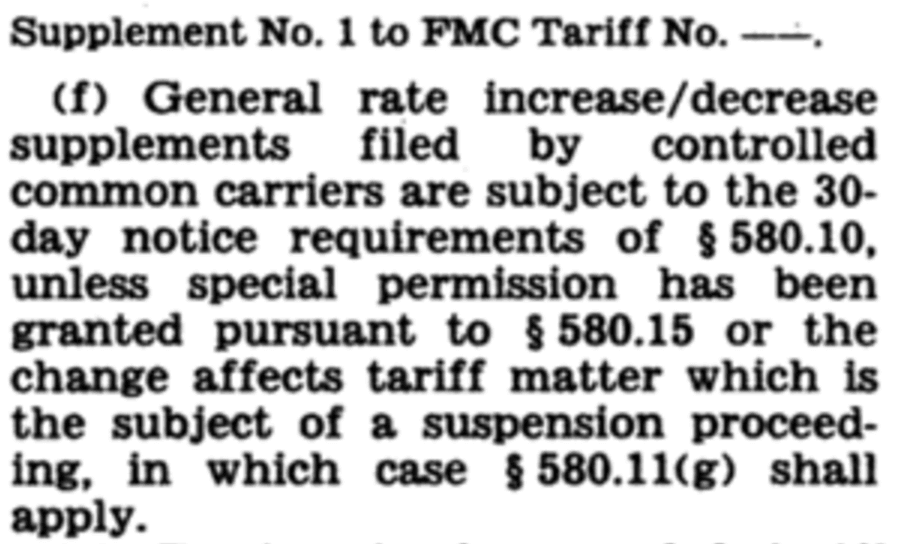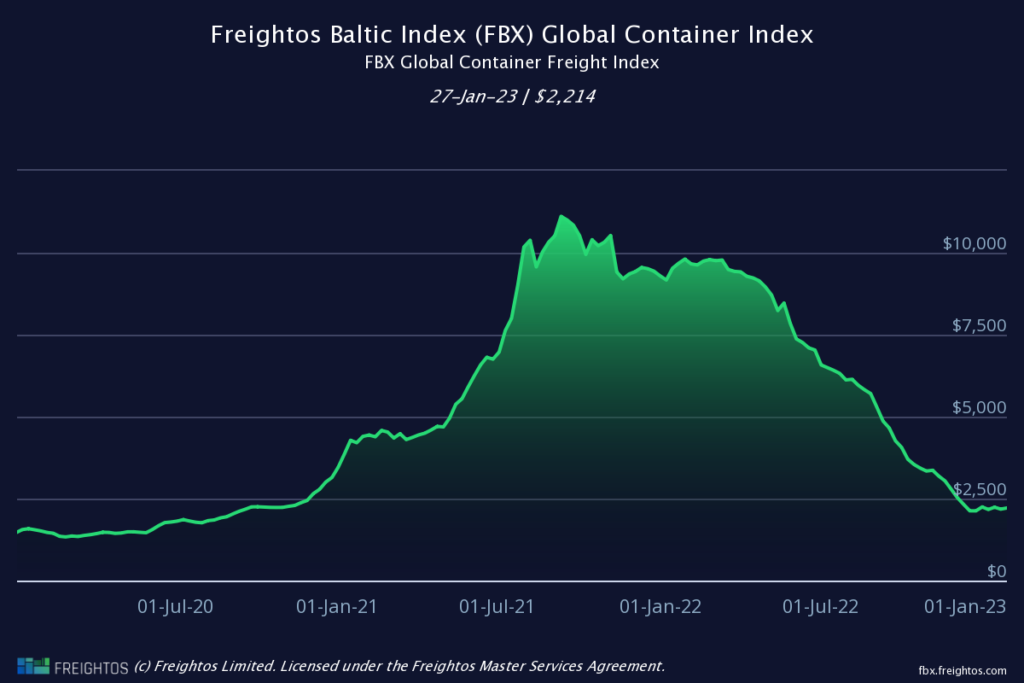Part of the Freight Term Glossary
What is a GRI in Shipping?
A GRI (General Rate Increase) is the amount by which ocean carriers increase their base rates across specific lines, generally as a result of increased demand.

The Code of Federal Regulations of the United States of America, p 340, 1992
GRI Charges In Shipping
Here’s how it happens.
In a non-volatile market, GRIs would only take place on an annual or semi-annual basis. However, supply and demand for ocean shipping can fluctuate pretty rapidly. Freightos.com’s free FBX freight index tends to look more like shark’s teeth than a flatline – but over the course of 2020-2021 we saw rates climbing steadily with successive GRIs, followed by tumbling rates in 2022.

Within the United States, ocean freight price increases must be reported to the Federal Maritime Commission 30 days before they go into effect. Over the course of the month between when they are reported and implemented, the carriers can decide against the GRI (or decide to lower the exact value) based on supply/demand changes.
Basically, they can leave the GRI as reported or reduce it, but they cannot increase prices over the initially-reported GRI value.
As a result, there’s generally a fair amount of haggling that goes on behind the scenes in the days leading up to a GRI. Large freight forwarders will push back against the rate increase, as their customers will generally attribute the price raise to them (there’s a reason many forwarders are reporting a drop in ocean freight profitability). Once the large forwarders and enterprise customers finish the negotiation, the smaller forwarders will also try to haggle lower GRIs, albeit with less negotiating power.
From a cargo owner’s perspective, GRIs can be tricky. When they come into effect, they affect all cargo not yet loaded onto a ship, irrespective of when the shipment was booked. For example, if a shipment is booked on the 28th at a specific price but only loaded on the 2nd, the GRI would still be applied to that specific shipment. In the industry, this is called “vatos” (valid as of time of shipping). Most forwarders will take this into account when quoting, or warn their customer that a GRI may be forthcoming.
GRI Fees, Surcharges & Cost Calculator
Our freight calculator relies on the world’s largest database of international freight pricing, updated weekly to take into account seasonality and GRIs.
Simply choose container, box, or pallet shipping, enter your dimensions and weight, and you’ll get an instant estimate of freight shipping costs.
General Rate Increase For Ocean Freight in 2024
Importers are wondering whether high rates will remain the trend through 2024.
With potential delays, limited capacity, and exorbitant costs, there are a few steps importers can take right now:
- Compare quotes and modes
- Expect longer transit time
- Diversify warehousing
- Assess profitability before ordering goods
- Check out daily FBX ocean rates index to help you stay on top of freight rates in 2024.



